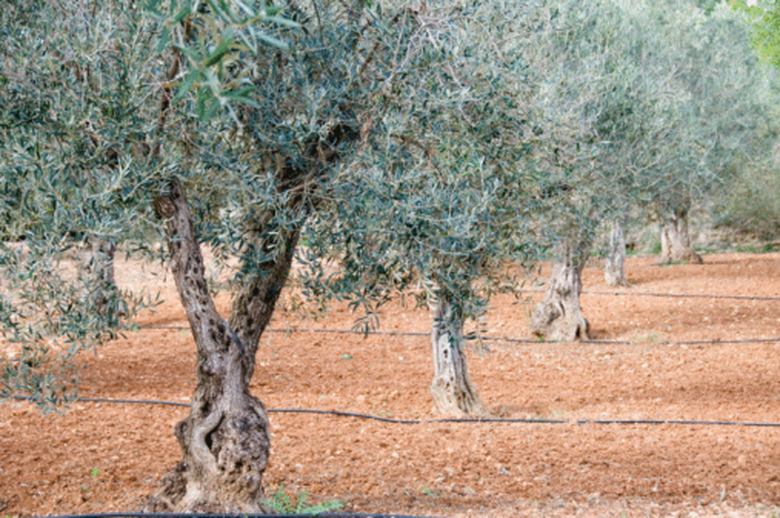Fruitless Olive Tree Varieties
Olive trees have characteristics that can make them attractive ornamentals. They have pleasant gray-green foliage, a gnarled trunk and willowy young growth, but these characteristics may be hampered by unpleasant and messy fruit drop. However, the development or discovery of fruitless varieties has addressed this issue.
Wilsonii
The Wilsonii variety of fruitless olive was discovered in a Manzanillo olive grove. This variety has a slow to moderate growth rate, eventually reaching a height and spread of 25 feet. The Wilsonii will occasionally produce fruit but in smaller quantities than standards. This gray-green tree is pest free, drought tolerant, thornless, long-lived and grows well in low elevations.
- Olive trees have characteristics that can make them attractive ornamentals.
- This variety has a slow to moderate growth rate, eventually reaching a height and spread of 25 feet.
Swan Hill
The Swan Hill olive is the most popular variety of fruitless olive tree. It can live for more than 150 years, has light gray, scaly bark and ovate gray-green leaves. At maturity, this variety can reach 35 feet in height but is drought intolerant.
Majestic Beauty
The Majestic Beauty variety has soft gray-green, willowy foliage and features a smooth gray trunk that gnarls with age. The Majestic Beauty is typically smaller than the standard olive, reaching only 20 to 30 feet in height.
Olive Tree Fruitless
Prune the olive tree canopy in late winter or early spring before flowering to effectively remove much of the growth from the previous growing season, as this is the wood that will produce flowers later in the season. This will generally not eliminate fruit production altogether and is most appropriate for small specimens where most of the canopy is easily reached or in situations where you prefer not to use sprays.
- The Swan Hill olive is the most popular variety of fruitless olive tree.
- The Majestic Beauty variety has soft gray-green, willowy foliage and features a smooth gray trunk that gnarls with age.
References
- Urban Forest Ecosystems Institute: Swan Hill Olive
- Arizona State University: Olea Europaea
- University of Arizona: Stopping Olive Trees From Fruiting
- California Rare Fruit Growers Inc.: Olive
- University of California Cooperative Extension: Olive Fruit Fly
- University of California Statewide Integrated Pest Management Program: Olive Fruit Fly
